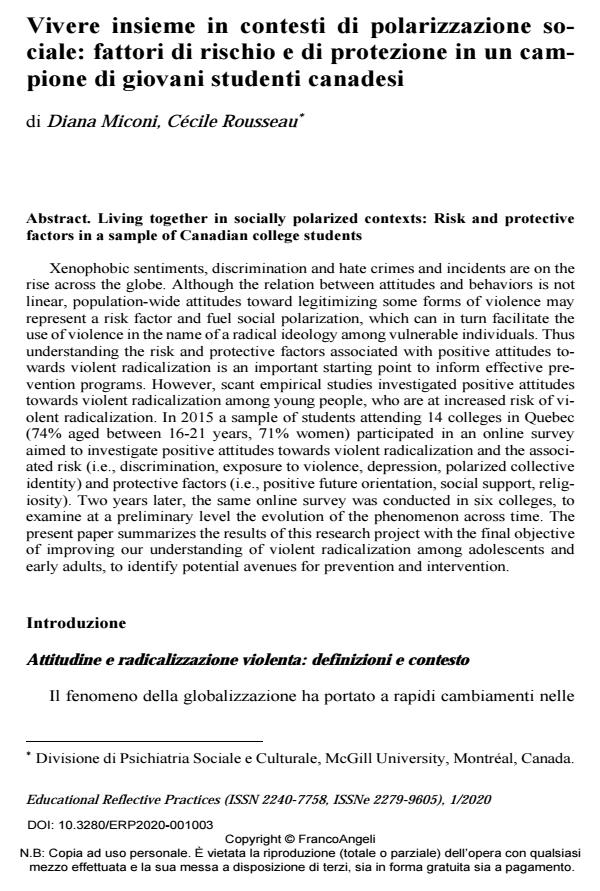Living together in socially polarized contexts: Risk and protective factors in a sample of Canadian college students
Journal title EDUCATIONAL REFLECTIVE PRACTICES
Author/s Diana Miconi, Cécile Rousseau
Publishing Year 2020 Issue 2020/1
Language Italian Pages 19 P. 55-73 File size 264 KB
DOI 10.3280/ERP2020-001003
DOI is like a bar code for intellectual property: to have more infomation
click here
Below, you can see the article first page
If you want to buy this article in PDF format, you can do it, following the instructions to buy download credits

FrancoAngeli is member of Publishers International Linking Association, Inc (PILA), a not-for-profit association which run the CrossRef service enabling links to and from online scholarly content.
Xenophobic sentiments, discrimination and hate crimes and incidents are on the rise across the globe. Although the relation between attitudes and behaviors is not linear, population-wide attitudes toward legitimizing some forms of violence may represent a risk factor and fuel social polarization, which can in turn facilitate the use of violence in the name of a radical ideology among vulnerable individuals. Thus understanding the risk and protective factors associated with positive attitudes towards violent radicalization is an important starting point to inform ef-fective prevention programs. However, scant empirical studies investigated posi-tive attitudes towards violent radicalization among young people, who are at in-creased risk of violent radicalization. In 2015 a sample of students attending 14 colleges in Quebec (74% aged between 16-21 years, 71% women) participated in an online survey aimed to investigate positive attitudes towards violent radicaliza-tion and the associated risk (i.e., discrimination, exposure to violence, depression, polarized collective identity) and protective factors (i.e., positive future orientation, social support, religiosity). Two years later, the same online survey was conducted in six colleges, to examine at a preliminary level the evolution of the phenomenon across time. The present paper summarizes the results of this research project with the final objective of improving our understanding of violent radicalization among adolescents and early adults, to identify potential avenues for prevention and intervention.
Diana Miconi, Cécile Rousseau, Vivere insieme in contesti di polarizzazione sociale: fattori di rischio e di protezione in un campione di giovani studenti canadesi in "EDUCATIONAL REFLECTIVE PRACTICES" 1/2020, pp 55-73, DOI: 10.3280/ERP2020-001003